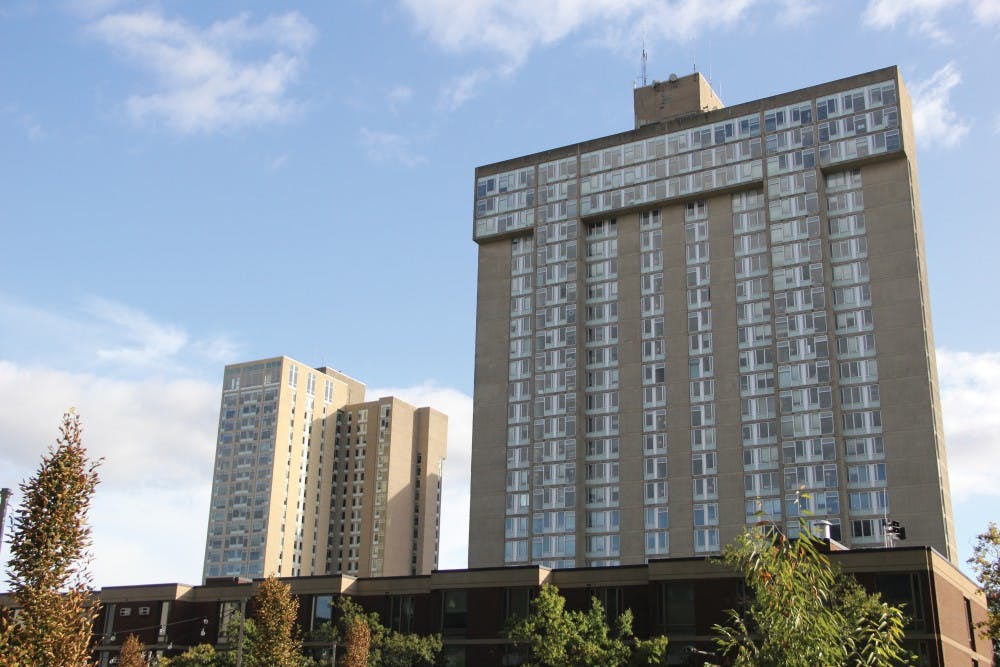
College houses switch from A/C to heating is happening over a longer period of time this year. //Carson Kahoe | Associate Photo Editor
Credit: Carson KahoeAs nightly temperatures begin to drop below 50 degrees, Penn buildings are saying goodbye to the summer and transitioning from air conditioning to heating.
Residential Services, College House and Academic Services and Facilities and Real Estate Services work in conjunction to prepare campus buildings to turn on the heat. The process is not instantaneous, instead taking one to two weeks.
This fall, FRES began the transition process on Oct. 8, and all heating systems should be confirmed to be operational by Oct. 21. Last year, the process began on Oct. 17 and lasted until Oct. 24.
"The temperature is not something black or white. It depends on the amount of volatility we see in the weather. But a rule of thumb might be at about 55 degrees for a series of days and a trend of declining temperatures," said Ken Ogawa, executive director of operations and maintenance at FRES.
First, multiple teams from FRES work to shut off the chilled water that feeds into the heating and cooling systems of every building on campus, which then turns off the air conditioning. This process alone is more complex than quickly turning off a few valves, and precautions must be taken.
"It's a careful process," FRES Energy Planner Andrew Zarynow said. "When steam is introduced into buildings too quickly, what happens is that the hot water in pipes can form into a 'slug' that moves through the pipe so fast that it can reach ballistic speeds." Transitioning slowly prevents any such thing from happening.
Once chilled water is taken care of, the temperatures of the systems in each building need about a week to normalize. Heating systems, which are steam-powered, can then be activated and additional hot water circulates throughout each building — residents can begin to feel the heat soon after.
The entire transition process is monitored by FRES, and small adjustments are made to the computer-regulated heating systems after hot water has begun to move through buildings.
The exact timing of the transition to heat is determined by FRES, Residential Services and CHAS to best assure "everyone’s optimal comfort." Residential Services Manager Erin Doby said in an email that "individual comfort levels are subjective, and indoor temperatures vary by building, and even depend on where your room is located."
Residential Services sent the first emails notifying students of the upcoming transition to heat on Oct. 1.
Determining when to transition to heat or air conditioning is sometimes a challenge because of regular fluctuations in temperature during spring and fall months — what FRES calls "shoulder seasons."
And as seasons change, so does energy and steam usage across campus.
"We transfer from high electricity and low steam usage in the summer to higher steam usage in the winter, and electricity [usage] tends to stabilize for a period in the winter," Ken said. "Electricity never drops to zero, because you still need to power basic things in the buildings like elevators and lighting."
Electricity use is mostly driven by occupancy, Ogawa said. Penn sees some of the highest energy-usage during exam season, as lights are kept on longer to study. Steam usage, on the other hand, is determined by weather and temperature. However, it remains above zero throughout warm months because warm water is still needed for things like cooking and bathing.
"The systems in Penn buildings are significantly more complicated than what you would see in a house — there's much more equipment, much more of a regimented procedure to transition, and it just takes time," Zarynow said.
The Daily Pennsylvanian is an independent, student-run newspaper. Please consider making a donation to support the coverage that shapes the University. Your generosity ensures a future of strong journalism at Penn.
DonatePlease note All comments are eligible for publication in The Daily Pennsylvanian.







